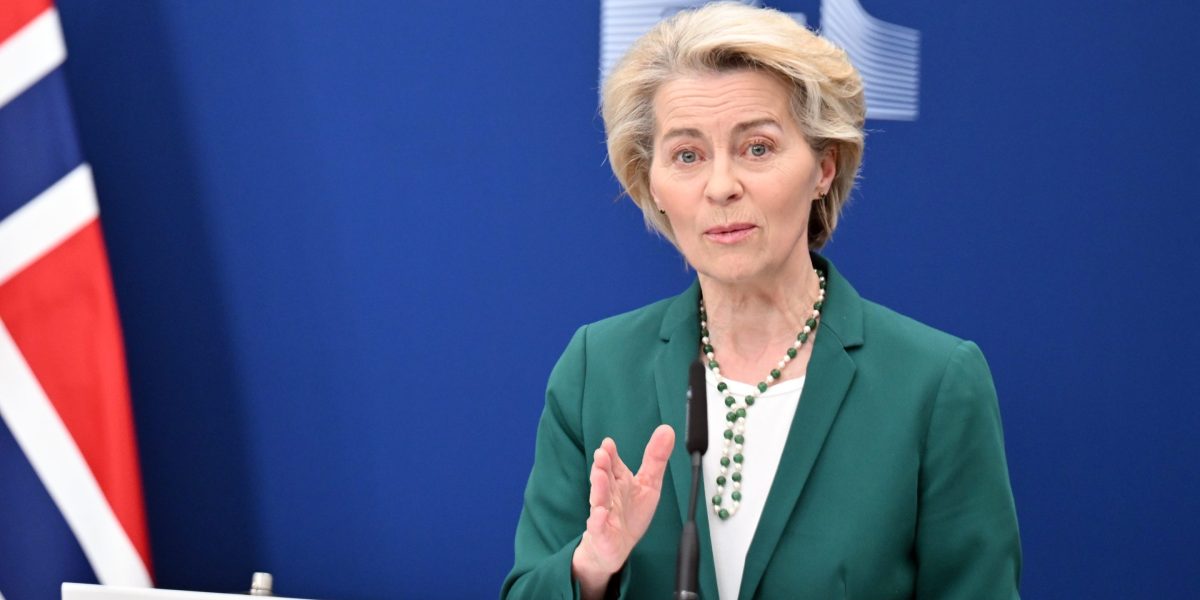The European Union approved tariffs to hit around €21 billion ($23.2 billion) of US goods in retaliation for the 25% duties President Donald Trump imposed last month on the bloc’s steel and aluminum exports.
A majority of the EU’s 27 member states on Wednesday voted in favor of the penalties, some of which will start taking effect in mid-April. The tariffs will target politically sensitive American states and include products such as soybeans from Louisiana, home to House Speaker Mike Johnson, as well as diamonds, agricultural products, poultry and motorcycles.
The European Commission, the bloc’s executive arm, said in a statement that the countermeasures can be suspended at any time “should the US agree to a fair and balanced negotiated outcome.”
The move adds to the growing transatlantic trade war, with the US also having applied a universal 20% tariff on nearly all European exports as well as a separate 25% duty on cars and some auto parts. Trump has said he’ll announce additional tariffs on lumber, semiconductor chips and pharmaceutical products. All of Trump’s new tariffs are hitting around €380 billion of EU goods.
Some of the EU tariffs will take effect on April 15, while another list will be imposed mid-May and a third will start on Dec. 1, Bloomberg reported earlier. Most of the targeted goods face a 25% tariff level, with a few categories set to face 10% levies.
Bourbon was removed from the bloc’s list amid pressure from member states after Trump threatened 200% duties on wine, champagne and other alcoholic beverages from France and elsewhere.
Trump has repeatedly attacked the EU, the US’s largest trading partner, saying it was formed to “screw” the US and that the bloc’s trade-in-goods surplus is evidence of an unfair relationship. The EU’s trade weighted average tariff rate was 2.7% in 2023, according to World Trade Organization data.
“They come up with rules and regulations that are just designed for one reason: that you can’t sell your product in those countries,” Trump said earlier this week. “And we’re not going to let that happen.”
The EU’s trade chief, Maros Sefcovic, discussed parameters of possible engagement on trade issues with his American counterparts late Tuesday, according a commission spokesperson. Talks have so far yielded little progress and US officials don’t appear to yet have a clear negotiating mandate from Trump, according to people familiar with the discussions.
The bloc’s executive arm is working on a “term sheet” of potential areas for negotiation, including lower tariffs, regulations and standards, Bloomberg previously reported.
Wednesday’s vote underscored the unity in EU capitals in the face of Trump’s escalating trade dispute. The American measures threaten to wipe out much of the euro-area expansion the European Central Bank forecasts for this year and next.
In addition, the commission, which handles trade matters for the bloc, is preparing a set of countermeasures to retaliate against the so-called reciprocal tariffs that went into effect Wednesday. The commission is planning to announce its plans early next week and then begin consultations with member states, a spokesperson said.
The universal tariffs are meant to target all the trade barriers US exports face abroad, such as duties, domestic regulations and taxes, including the value-added tax. Commission President Ursula Von der Leyen has previously said the EU “holds a lot of cards,” including retaliatory tariffs and targeting American services and technology companies.
France, Germany and other countries have called on the commission to consider deploying the bloc’s anti-coercion instrument — the EU’s most powerful trade tool, designed to strike back against nations that use trade and economic measures coercively, Bloomberg reported earlier.
The bloc still wants to find a negotiated solution to the tariff dispute but so far it has failed to engage in meaningful negotiations with the US administration.
For the EU, the fight over American metals tariffs started in 2018 during Trump’s first term, when the US hit nearly $7 billion of European steel and aluminum exports with duties, citing national security concerns. At the time, officials in Brussels scoffed at the notion that the EU posed such a threat.
In that first salvo, the US hit steel goods with 25% tariffs and aluminum with 10%, and included exemptions for certain products.
The 27-nation bloc reacted by targeting politically sensitive companies with retaliatory duties, including Harley-Davidson Inc. motorcycles and Levi Strauss & Co. jeans. The measures were applied product-by-product and included agricultural goods and apparel in addition to steel and aluminum products.
The two sides agreed to a temporary truce in 2021, when the US partly removed its measures and introduced a set of tariff-rate quotas above which duties on the metals are applied, while the EU froze all of its restrictive measures.
This story was originally featured on Fortune.com
Source link


 Entertainment8 years ago
Entertainment8 years ago
 Politics8 years ago
Politics8 years ago
 Entertainment8 years ago
Entertainment8 years ago
 Entertainment8 years ago
Entertainment8 years ago
 Tech8 years ago
Tech8 years ago
 Tech8 years ago
Tech8 years ago
 Tech8 years ago
Tech8 years ago
 Politics8 years ago
Politics8 years ago






